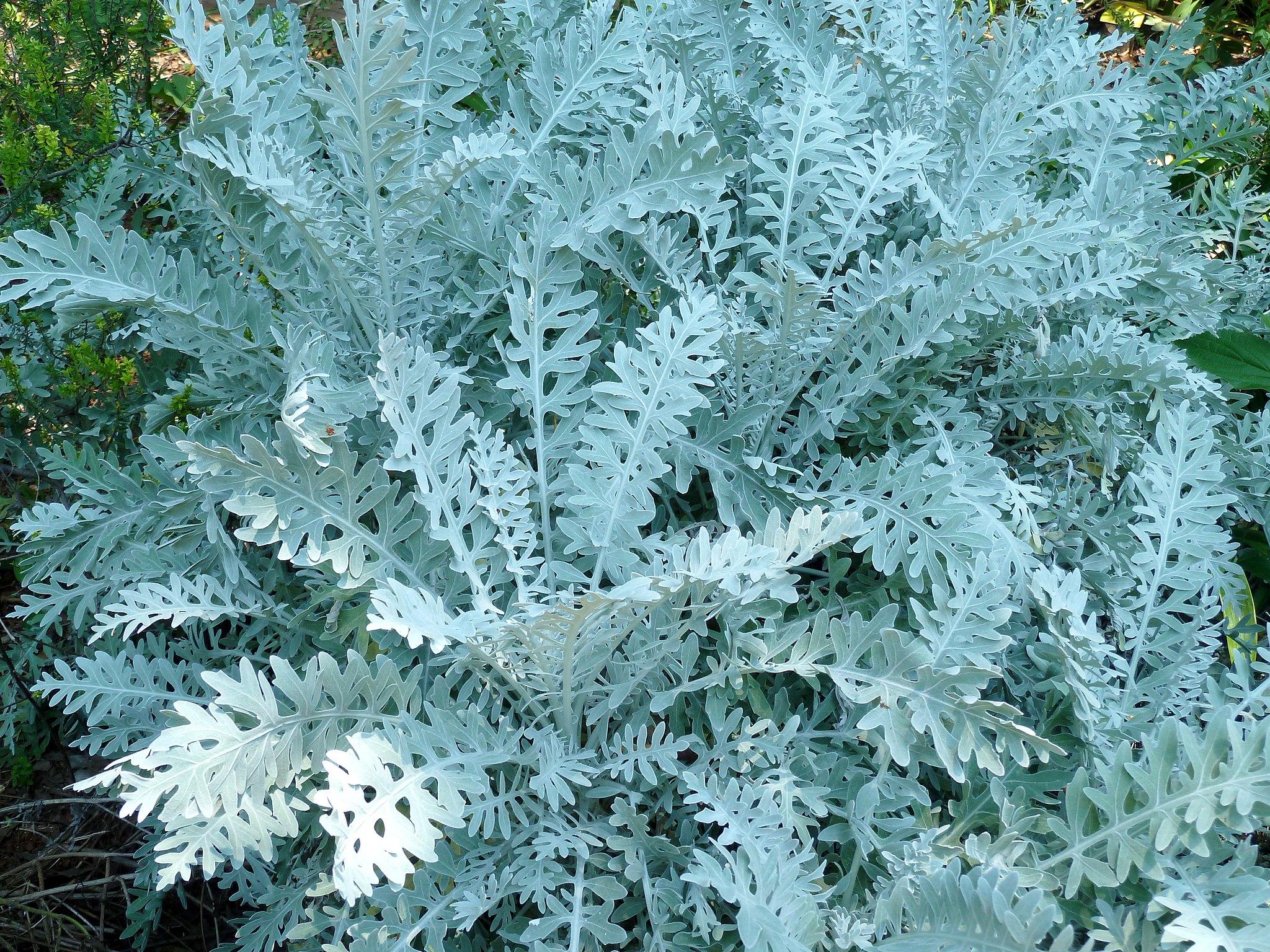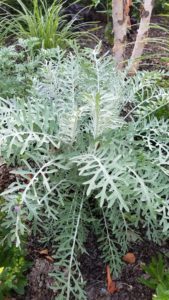
Centaurea cineraria
Centaurea cineraria
(sen-Tor-ee-ah sin-e-RAH-ree-ah)
Dusty Miller
Flowers are fleeting, but foliage is forever. This sentiment is shared by many garden designers and horticulturist who understand the importance of plants that provide more than just a quick splash of color and then fade into obscurity. Dusty Miller is one of these plants that is utilized for its attractive foliage, rather than its flowers. Whether you’re a florist looking for a filler plant to accentuate your floral design, or a garden designer in need of a perfect accent, look no further than Centaurea cineraria.
That outstanding foliage has more than aesthetic value. The glaucous appearance is the result of tiny hairs(trichomes) that cover the cuticle layer in order to restrict water loss. A velvet texture of the foliage is why some people colloquially refer to this plant as Velvet Centaurea. The downy foliage allows water vapor to be trapped next to the leaf surface, reducing transpirational water loss. An evolutionary adaptation that has benefited gardeners around the world!
Origin:
Centaurea – Referring to the Centaur Chiron, who discovered the medicinal values of the plant that came to be known as Centaury.
cineraria – Resembles Cineraria maritima
Family – Asteraceae
Hardiness – USDA Zone 7-11
Nativity – Italy (Bay of Naples)
Description:

Photo courtesy – Gardening in the Mediterranean Climates Worldwide
Form – A tender perennial that starts its growth as an upright basal cluster of leaves, turning into arching and spreading foliage reaching close to 3ft. The upright leaves eventually succumb to the arching effect as well, bringing the overall height to 2 ft.
Foliage – Simple, alternate, with an illusion of pinnate arrangement, lanceolate leaf with deeply dissected sinuses. The lobes on the leaf are more finely cut than Jacobaea maritima. Glaucous foliage has a wooly appearance from tiny hairs that cover the cuticle.
Flower – Thistle like flowers are borne terminally on 24-30″ stalks and begin flowering during the Mediterranean spring. Flowers sit on a series of involucre bracts that bear noticeable black hairs on top of their edges. Not grown for its flowers.

Photo Credit – Seán O’Hara @ gimcw.org
Culture:
Light – Full sun / Shade will result in more green than silver appearance
Soil – Well-draining soil of average fertility / Does not tolerate wet boots
Propagation – Cuttings can be rooted in a sandy mix / Sow seed in fall
Problems – White mold, rust, downy and powdery mildew, thread blight, and Southern blight

Centaurea cineraria ‘Colchester White’ form and arching habit

Centaurea cineraria ‘Colchester White’ foliage
Utilization – It can be utilized in sea-side gardens, moon gardens, on the margins of a sunny mixed border, or in container and floral displays. With such versatility, Dusty Miller should be a plant that is part of your garden design arsenal.
Comments – To get Dusty Miller looking its best, cut the flowers in order to promote more vegetative growth. Centaurea cineraria ‘Colchester White’ is the most used cultivar in horticulture.
Care – Minimize mulching around the plant as it can lead to fungal root problems. Foliage can be trimmed to regain plant form.
♥ Get your Velvet Centaurea from White Flower Farm
References




